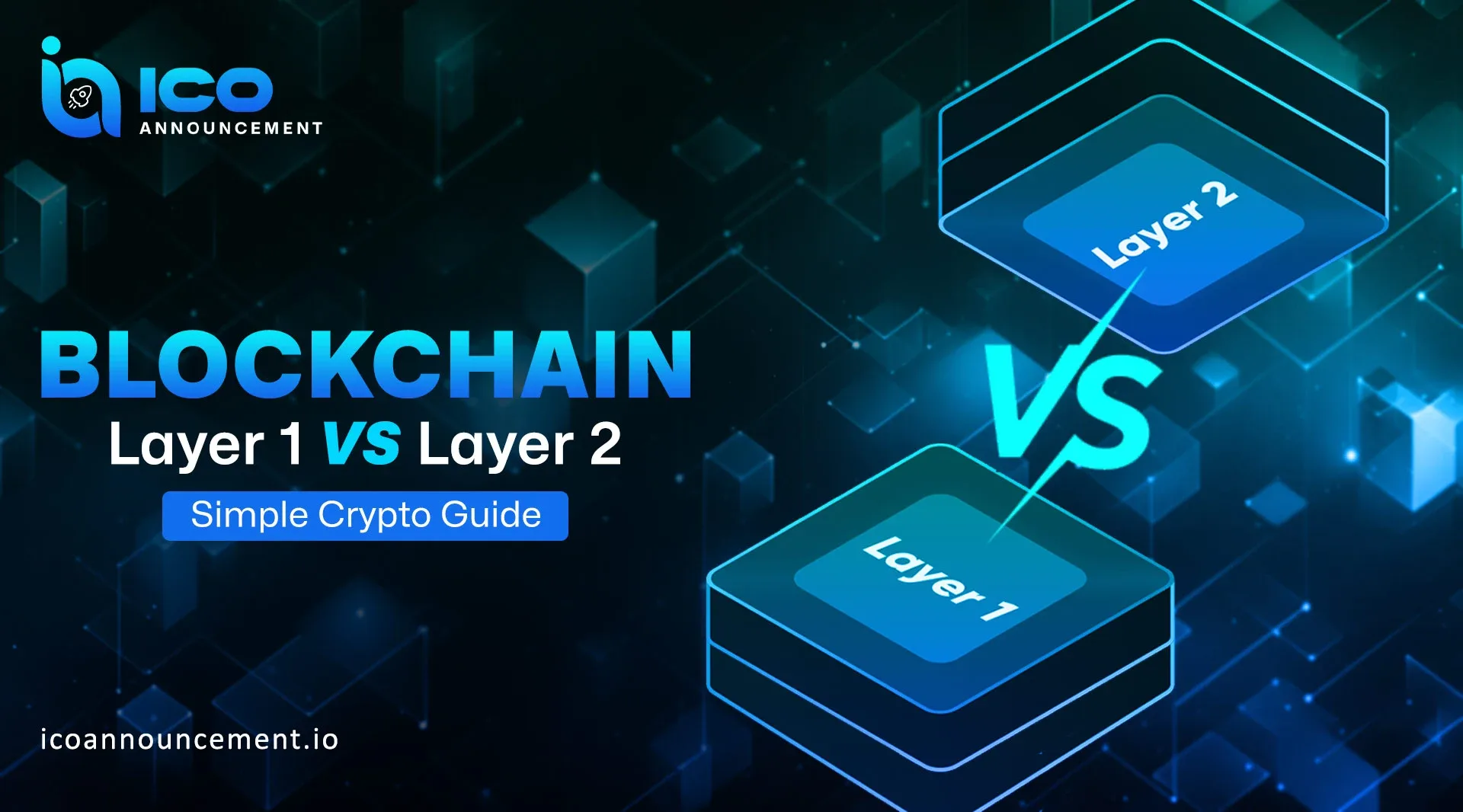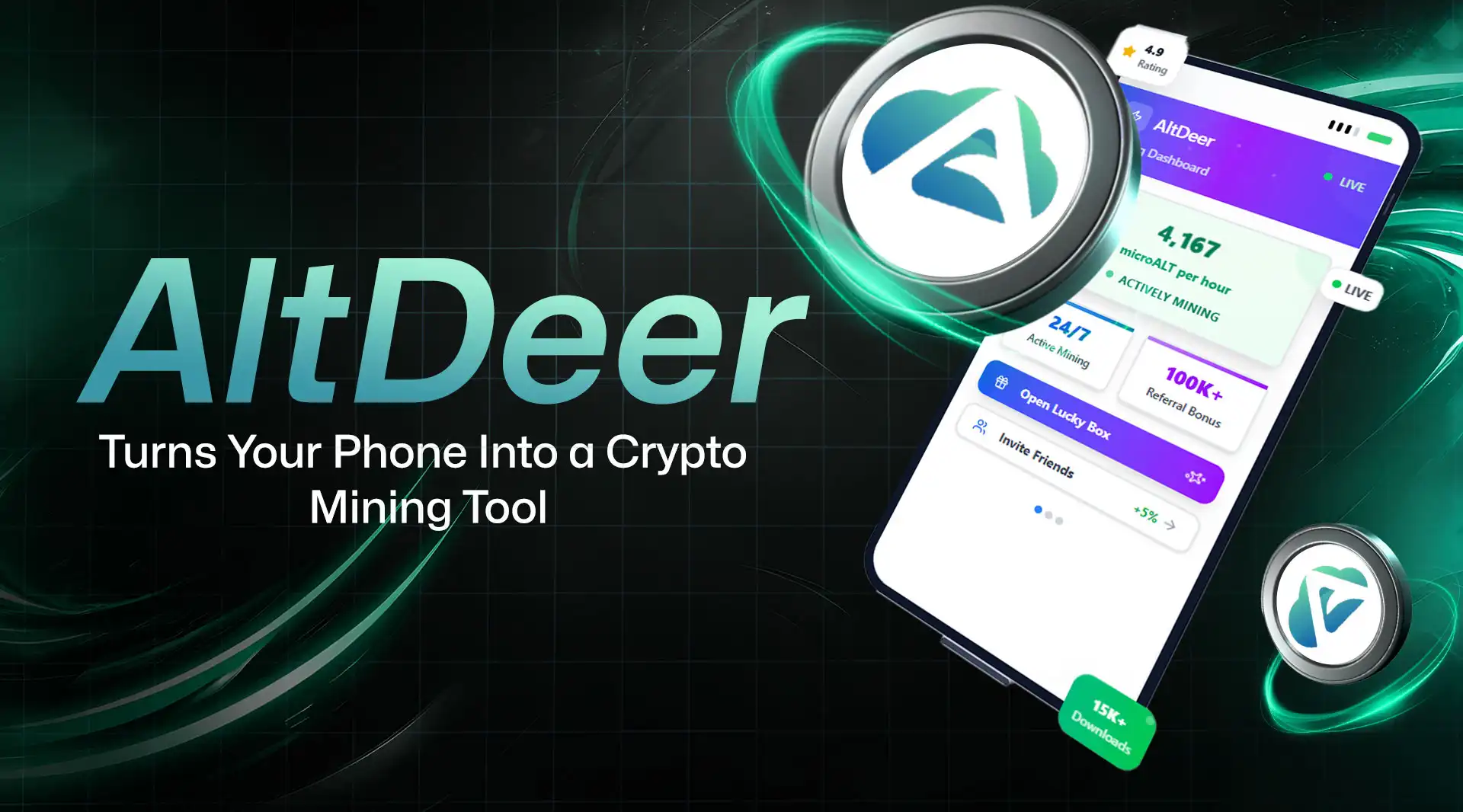The Layer 1 vs Layer 2 Blockchains: Easy Guide for Beginners

How Layer 1 vs Layer 2 Blockchains Improve Speed and Scalability
Blockchain is evolving quickly, and with that comes the emergence of terms like Layer 1 vs Layer 2. Most hear these terms but do not truly understand what they mean. That is okay! This blog breaks down Layer 1 vs Layer 2 blockchains by simplifying the explanation of each term to allow everyone to understand how the different layers function, why they are necessary, and how the layers increase the speed and usability of blockchain technology.
This uncomplicated explanation gives a clear idea of how blockchain networks expand and accommodate millions of users worldwide. It is an excellent resource for new users, students, and current cryptocurrency owners.
What Are Blockchains
To begin the discussion of layers 1 and Layer 2, we need to define what a blockchain actually is. A blockchain is a digital network where each piece of information is stored in a "block." Each block is connected to another block in chronological order, forming a "chain." Once information has been added to a blockchain, no one can modify it, meaning the blockchain is secure, transparent and trustworthy.
However, as increasing numbers of users interact with the blockchains, blockchains may become slow and costly to operate; therefore, this is where layer 1 vs Layer 2 solutions come into play.
What Is a Layer 1 Blockchain
A Layer 1 blockchain is the main or base network. It works as the foundation of the entire system. All transactions, smart contracts, and rules run directly on this base layer.
Some common Layer 1 blockchains include:
Bitcoin
Ethereum
Solana
Avalanche
BNB Chain
Layer 1 handles everything from verifying transactions to keeping the network secure. It is the original layer where the core operations happen.
How Layer 1 Blockchains Work
Layer 1 blockchains have their own rules and technology. They use a method called consensus to confirm transactions. Some popular methods are:
Proof of Work
Proof of Stake
These methods help the network agree on what transactions are real. But when too many people use a Layer 1 blockchain, it begins to slow down. This creates a problem known as the blockchain trilemma.
The Blockchain Trilemma
The blockchain trilemma explains how blockchains struggle to balance three important things:
Security
Decentralization
Scalability
A Layer 1 blockchain can be secure and decentralized, but may become slow and expensive when many people use it. This is why Layer 2 solutions were created.
What Is a Layer 2 Blockchain
A Layer 2 blockchain is a secondary network built on top of a Layer 1 blockchain. It does not replace the main blockchain. Instead, it helps the main blockchain handle more transactions quickly and cheaply.
Layer 2 solutions take some of the work off the main network. They process many transactions outside the Layer 1 chain and send only the final results back to the base blockchain.
Some popular Layer 2 blockchains include:
Polygon
Arbitrum
Optimism
Lightning Network
Layer 2 is like adding a flyover road above a busy street. The main road is still there, but the flyover helps reduce traffic.
How Layer 2 Blockchains Work
Layer 2 handles many transactions off-chain. After processing them, it sends a summary to the Layer 1 network. This keeps the base layer safe while allowing faster and cheaper activity on the second layer.
Different Layer 2 solutions use different methods. The most common types are:
State channels
Rollups
Sidechains
Plasma chains
These systems improve blockchain speed without losing security from the main network.
Why We Need Layer 2 Blockchains
When blockchains first started, there were not many users. But today, millions of people use crypto apps, games, tokens, and smart contracts every day. Layer 1 alone cannot handle this load, so Layer 2 helps with:
- Faster transactions
- Lower fees
- Greater network capacity
- Better user experience
Without Layer 2, blockchains would become slow and costly. Users might avoid the network, and developers would struggle to build new apps.
Key Differences Between Layer 1 and Layer 2
Layer 1 and Layer 2 work together, but they are not the same. Here are the simple differences:
Layer 1 is the base network.
Layer 2 is built on top of the base network.
Layer 1 handles core security and decentralization.
Layer 2 improves speed and scalability.
Layer 1 is slower during high traffic.
Layer 2 makes transactions faster and cheaper.
Layer 1 is like a main highway. Layer 2 is like extra lanes added to support heavy traffic.
Benefits of Layer 1 Blockchains
Layer 1 networks offer several strong advantages:
They provide strong security.
They act as the main record of truth.
They host smart contracts and core functions.
They support large decentralized communities.
Layer 1 networks set the foundation for the entire ecosystem.
Benefits of Layer 2 Blockchains
Layer 2 solutions bring important improvements that help users and developers:
Faster speed: Transactions are confirmed quickly.
Low fees: Costs drop because the main network does less work.
Scalability: More users can join without slowing the network.
Better app performance: Games, DeFi apps, and NFTs run smoothly.
Layer 2 makes blockchain affordable and easy to use for everyone.
Real World Examples of Layer 1 and Layer 2
To make it even simpler, here are a few examples:
Bitcoin is Layer 1.
Lightning Network is Layer 2 for Bitcoin.
Ethereum is Layer 1.
Polygon, Arbitrum, and Optimism are Layer 2 for Ethereum.
Layer 1 keeps everything secure. Layer 2 makes it faster and cheaper.
Why Both Layers Are Important
Some people think Layer 1 and Layer 2 are in competition, but they actually work together. Layer 1 provides safety and base rules, while Layer 2 provides speed and user-friendly experiences.
Without Layer 1, Layer 2 would not have a secure foundation.
Without Layer 2, Layer 1 would become slow and expensive.
Both layers are needed to support the future of crypto, DeFi, NFTs, and Web3.
The Future of Layer 1 and Layer 2
The future of blockchain depends on strong Layer 1 and Layer 2 systems working together. Here is what we can expect:
More Layer 2 networks will launch.
Layer 1 blockchains will upgrade for better speed.
More apps, games, and financial tools will depend on Layer 2.
Users will experience faster and cheaper transactions.
As adoption grows, these layers will support millions of users and thousands of applications.
Final Thoughts
Understanding Layer 1 and Layer 2 blockchains is important for anyone interested in crypto or Web3. Layer 1 is the main blockchain that provides security and core functions. Layer 2 sits on top of it and helps with speed, fees, and scalability.
Together, they make blockchain technology ready for global use. They help blockchains handle heavy traffic without slowing down. This teamwork is the key to the future of Web3, digital finance, gaming, and smart contracts.
This simple guide should now give you a clear picture of how these layers work and why they matter. Both layers are important, and both will shape the next generation of blockchain technology.





